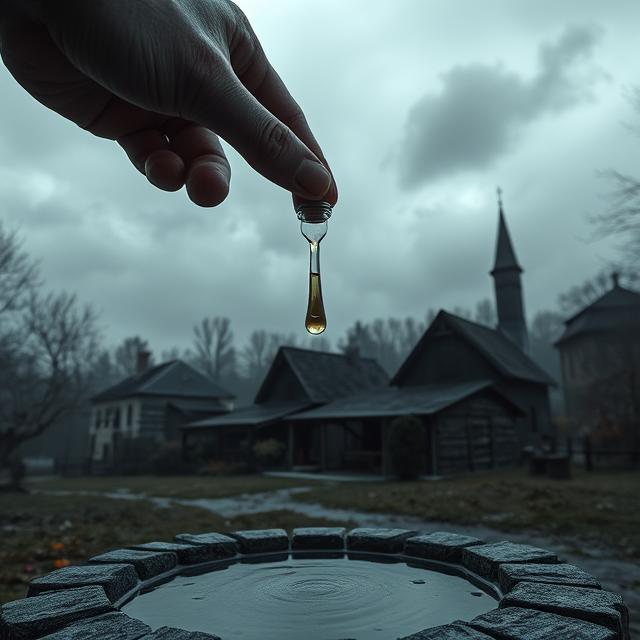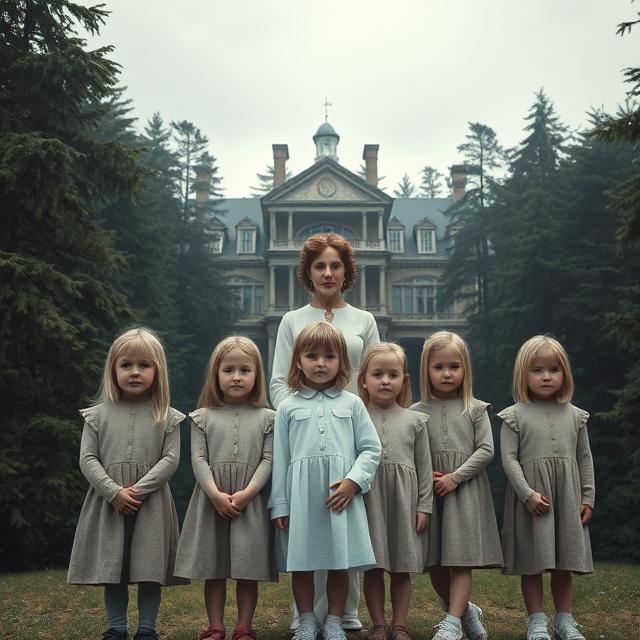In the seemingly idyllic and isolated Hungarian village of Nagyrév, nestled along the Tiszazug region’s riverbanks in the early 20th century, a horrifying secret festered beneath the surface of everyday life. What began as a desperate act of liberation for a few women trapped in abusive marriages spiraled into a chilling, systematic poisoning spree that claimed the lives of dozens, possibly hundreds, of villagers over a period of fifteen years. The perpetrators, primarily women who became known as “The Angel Makers of Nagyrév,” used arsenic to quietly dispose of unwanted husbands, elderly relatives, and even children. This almost unimaginable reign of terror, carried out with chilling efficiency and often with the tacit knowledge or even complicity of the community, remains one of history’s most disturbing examples of collective murder.
The setting for this dark chapter was Nagyrév, a small, rural village that experienced significant social upheaval during and after World War I. Many of the village’s men were conscripted into the army, leaving their wives and families behind. When these men returned, often traumatized, disabled, or embittered, they frequently brought with them a new wave of domestic violence and hardship. The traditional patriarchal structure of the village, coupled with the economic distress, created a desperate situation for many women trapped in unhappy or abusive marriages.
The catalyst for the reign of the Angel Makers is often attributed to Susanna Fazekas, a midwife who arrived in Nagyrév around 1911. Fazekas was an imposing and influential figure, and she quickly gained the trust and respect of the village women. It is believed that she, or perhaps another woman before her who initiated the practice, began providing a “solution” to the women’s marital problems: a slow-acting poison, typically arsenic.
The poison, often extracted from flypaper by boiling it down and filtering the liquid, was referred to euphemistically as “Arsenic-water,” “fly poison,” or “medicine.” It was administered to the victims, usually husbands, gradually over a period of days or weeks, making their deaths appear natural, often attributed to illness or the common ailments of the time.
The motivations behind these widespread poisonings were complex and varied:
- Escape from Abuse: For many women, the primary motivation was to escape brutal and abusive husbands with whom they had no legal or social recourse for divorce.
- Financial Gain: With the advent of life insurance and the payment of soldiers’ pensions during and after WWI, some women saw an opportunity to gain financially from their husbands’ deaths.
- Desire for Freedom: After years of strict societal constraints, the war had given many women a taste of independence. Returning husbands often curtailed this newfound freedom.
- Social Pressure and Complicity: As the practice became more widespread, it created a perverse form of social norm. Other women who benefited from the poisonings, or simply turned a blind eye, became tacitly complicit, ensuring silence.
- Disposing of Unwanted Relatives: Beyond husbands, the poison was also used to eliminate elderly parents or other relatives who had become a financial burden or were simply inconvenient. Tragically, even children were sometimes poisoned to prevent their parents from having to care for them or to facilitate new relationships.
The reign of the Angel Makers continued largely undetected for over 15 years. The isolated nature of the village, the high mortality rates common at the time (especially during and after the war, which provided a plausible cover for many deaths), and the lack of thorough autopsies or forensic investigation allowed the murders to go unnoticed. The village doctor and local authorities often dismissed the deaths as natural causes, and the community, through a mixture of fear, complicity, and benefiting from the “solutions,” maintained a chilling silence.
The total number of victims is disputed, but estimates range from 45 to over 100, possibly even more. The sheer scale of the killings, carried out by multiple women with the knowledge of others, makes this a uniquely disturbing chapter in true crime history.
The gruesome secret of Nagyrév finally began to unravel in 1929. A medical student visiting the village noticed the unusual number of deaths and the rapid re-marriages of widows. He reported his suspicions to the authorities. The local midwife, Susanna Fazekas, was eventually implicated after a body was exhumed for examination and found to contain arsenic.
Once the investigation began in earnest, the truth rapidly came to light. Exhumations revealed bodies riddled with arsenic. Faced with mounting evidence, several women confessed their involvement, often implicating others. The confessions confirmed the widespread nature of the poisonings and the central role of Susanna Fazekas.
The arrests and trials of the Angel Makers shocked Hungary and made international headlines. Many of the women, including Susanna Fazekas, confessed to their crimes. Fazekas reportedly died by suicide before her capture, but several others were convicted. While some received lengthy prison sentences, others were condemned to death.
The case of the Angel Makers of Nagyrév stands as a chilling and complex study of human desperation, social conformity, and the dark consequences of unchecked power within a community. It serves as a stark reminder that even in seemingly peaceful settings, the seeds of monstrous acts can take root, fueled by societal pressures, personal suffering, and the terrifying willingness of individuals to participate in collective depravity. The poisoned wells of Nagyrév will forever echo the quiet whispers of the Angel Makers, a terrifying testament to a village that descended into systematic murder.
Want to explore the shadows even deeper? For more chilling cases like this, visit SinisterArchive.com, where the legends are real.




